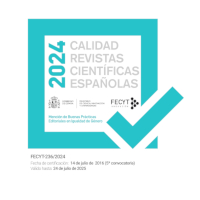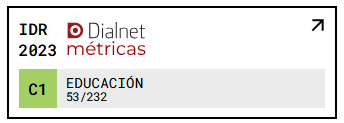Foreign Language Teacher Professional Development through transnational collaboration and the use of ICT
DOI:
https://doi.org/10.18172/con.4323Keywords:
Continuing Professional Development, foreign language teaching, teaching innovation, teacher training, mobile technologiesAbstract
At present, in a constantly evolving world, one of the underpinned premises in teacher training is the need for teachers to be aware that they should take on a Continuous Professional Development. Future teachers needtraining strategies to acquire tools and skills that allow them to follow a life-long learning process. This training is carried outin a social reality where new technologies are increasingly adopting a major role. This article has the aim to present a transnational training innovation project for foreign language teachers’ Continuing Professional Development through teaching actions based on the development of reflective practice and the use of mobile technologies. First results show that this training project has enabled to pre-service teachers to acquire teaching skills, such as a more efficient use of mobile technologies or a better capacity to focus on reflective practice as a tool for continuing professional development.
Downloads
References
Allwright, D. (2001). Three major processes of teacher development and the appropriate design criteria for developing and using them. En B. Johnson y S. Irujo (Eds.), Research and Practice: Voices from the field (pp. 115-133). Minneapolis: Center for Advanced Research on Language Acquisition.
Andrews, S. (2007). Language Teacher Awareness. Cambridge: CUP.
Borg, S. (2015). Teaching for Success. Contemporary perspectives on continuing professional development. Londres: British Council.
Borko, H. (2004). Professional Development and Teacher Learning: Mapping the Terrain. Educational Researcher, 3(8), 3-15. Recuperado de https://pdfs.semanticscholar.org/f317/c2912db1c09387a5eb17dfa66b063956afba.pdf.
British Council (2011). Going forward: Continuing Professional Development for English Language Teachers in the UK. Londres: British Council. Recuperado de https://englishagenda.britishcouncil.org/sites/default/files/filefield_paths/b413_cpd_for_teachers_v2.pdf.
British Council (2015). Continuing Professional Development (CPD) Framework for Teachers. Londres: British Council. Recuperado de https://www.teachingenglish.org.uk/sites/teacheng/files/CPD%20framework%20for%20teachers_WEB.PDF.
Burden, K. y Kearney, M. (2016). Future Scenarios for Mobile Science Learning. Research in Science Education, 46(2), 287-308. https://doi.org/10.1007/s11165-016-9514-1.
Burden, K., Kearney, M., Schuck, S. y Aubusson, P. (2015). Viewing Mobile Learning from a Pedagogical Perspective.ALT-J Association for Learning Technology Journal, 20(3), 1-17. http://doi.org/10.3402/rlt.v20i0.14406 .
Comisión Europea (2013). Supporting teacher competence development for better learning outcomes. European Commission-Education & Training. Recuperado de http://ec.europa.eu/assets/eac/education/404_en.htm.
Consejo de Europa (2009). Council conclusions of 26 November 2009 on the profesional development of teachers and school leaders. Oficial Journal of the European Union, 12.12.2009 C 302/6 Recuperado de https://eur-lex.europa.eu/LexUri Serv/LexUriServ.do?uri=OJ:C:2009:302:0006:0009:EN:PDF.
Crandall, J. y Christison, M. (Eds.) (2016). Teacher Education and Professional Development in TESOL: Global Perspectives. Londres: Routledge.
Day, C. y Sachs, J. (2004). International Handbook on the Continuing Professional Development of Teachers. Maidenhead: Open University Press.
Estapa, A., Pinnow, R. y Chval, K. (2016). Video as a professional development tool to support novice teachers as they learn to teach English language learners. The New Educator, 12(1), 85-104. http://doi.org/10.1080/1547688X.2015.1113350.
Evetts, J. (2009). The management of professionalism: A contemporary paradox. En S. Gewirtz, P. Mahony, I. Hextall y A. Cribb (Eds.), Changing Teacher Professionalism: International Trends, Challenges and Ways Forward (pp. 19-30). London: Routledge.
Freeman, D. y Johnson, K. (1998). Reconceptualizing the knowledge-base of language teacher education. TESOL Quarterly, 32(3), 397-417.
Hattie, J. (2009). Visible learning: A synthesis of over 800 meta-analyses relating to achievement. Londres: Routledge.
Hattie, J. (2012). Visible learning for teachers. Londres: Routledge.
Hayes, D. (Ed.) (2014). Innovations in the continuing professional development of English language teachers. Londres: British Council.
Kennedy, A. (2011). Collaborative continuing professional development (CPD) for teachers in Scotland: aspirations, opportunities and barriers. European Journal of Teacher Education, 34(1), 25-41. https://doi.org/10.1080/02619768.2010.534980.
Laakkonen, I. (2011). Personal learning environments in higher education language courses: an informal and learner-centered approach. En S. Thouësny y L. Bradley (Eds.), Second language teaching and learning with technology: views of emergent researchers (pp. 9-26), Dublin: Research-publishing.net. http://doi.org/10.14705/rpnet.2011.00004.
Lortie, D. (1977). Schoolteacher: A Sociological Study. Chicago: University of Chicago Press.
Mateva, G., Vitanova, A. y Tashevska, S. (2011). The European profiling grid: A user guide. Recuperado de http://www.epg-project.eu/wp-content/uploads/The-EPG-PDF-publication_EN.pdf.
McLoughlin, C. y Lee, M. (2009). Personalised Learning Spaces and Self-Regulated Learning: Global examples of Effective Pedagogy. Proceedings ascilite Auckland 2009 (pp. 639-645). Auckland, Nueva Zelanda: University of Auckland. Recuperado de https://pdfs.semanticscholar.org/5e22/eb07f0ad773c38e55dde11b296dbb6983364.pdf.
Newby, D., Allan, R., Fenner, A-B., Jones, B., Komorowska, H. y Soghikyan, K. (2007). EPOSTL - A reflection tool for language teacher education. Strasbourg: Council of Europe Publishing. Recuperado de http://epostl2.ecml.at/LinkClick.aspx?fileticket=Odz4pL2JvAk=&t.
OCDE (2014). TALIS 2013 Results: An International Perspective on Teaching and Learning. Paris: OECD Publishing. http://doi.org/10.1787/9789264196261-en.
Richards, J. y Farrell, T. (2005). Professional Development for Language Teachers. Strategies for Teacher Learning. Cambridge: CUP.
Redecker, C. (2017). European Framework for the Digital Competence of Educators: DigCompEdu. En Y. Punie (Ed.), EUR 28775EN. Luxembourg: Publications Office of the European Union. http://doi.org/10.2760/159770.
Slavin, R. (1994). Using Student Team Learning. Baltimore, MD: Johns Hopkins University, Center for Social Organization of Schools.
Taylor, S. (2011). Behavior Basics: Quick Behavior Analysis and Implementation of Interventions for Classroom Teachers. The Clearing House, 84(5), 197-203. http://doi.org/10.1080/00098655.2011.568988.
UNESCO (2012). Education for sustainable development: sourcebook. UNESCO education sector. Learning & Training Tools, 4. Recuperado de https://unesdoc.unesco.org/ark:/48223/pf0000216383.
Downloads
Published
How to Cite
Issue
Section
License
The authors retain copyright of articles and authorize Contextos Educativos. Revista de Educación the first publication. They are free to share and redistribute the article without obtaining permission from the publisher as long as they give appropriate credit to the editor and the journal.
Self-archiving is allowed too. In fact, it is recommendable to deposit a PDF version of the paper in academic and/or institutional repositories.












